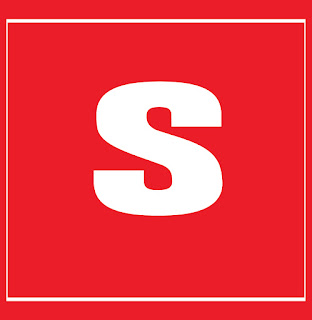In a constant search for novelty the carpet-printing trade has developed a wide variety
of processes in which the applied dyes are selectively discharged or resisted by chemical means, or physically displaced from the carpet surface. Physical displacement was the
basis for the Gum-TAK process developed in the USA (see section 4.3.4) using liquors
and print pastes that differed in their viscosity.
Normal discharge printing methods using, for example, an acidic paste containing
either sodium formaldehyde sulphoxylate or thiourea dioxide have been used to
produce white printed effects on coloured ground shades. The ground may be applied
to the carpet but not fixed, or a predyed ground may be used. The former process is
more successful since the discharge agent can more readily reduce dye that has not
diffused into the fibre.
Experience has shown, however, that the quality and sharpness of the discharge are difficult to control and reproducibility is poor. ‘Illuminated’ discharges can be produced by incorporating a discharge-resistant acid dye into the discharge recipe, but it is difficult to find suitable blue dyes for this purpose. Resist styles have enjoyed much greater commercial success, although there is often a degree of mechanical displacement as well as a chemical resist effect in these processes.
Three types of resist agent have been used: – reactive agents that permanently alter the affinity of the fibre for acid dyes (for example, Sandospace S and DP (S)) – substantive, anionic agents which tend to prevent fixation of dyes having lower neutral affinity or those of large molecular mass, that is, slower-diffusing dyes (for example, Thiotan SWN (S), Matexil FA-SNX (Zeneca), Mesitol NBS (BAY)) – cationic agents that tend to form complexes with dyes of large molecular mass, such as 1:2 metal-complex and milling acid dyes (for example, Basacryl Salt KX (BASF), Thiotan TR (S)). There are many possible application sequences, and each printer chooses the one most suited to the equipment available (the printer and dye applicator systems). Types of dye used for these processes are: Type A: monosulphonated equalising acid dyes Type B: 1:2 metal-complex dyes (both mono- and di-sulphonates) or selected milling acid dyes Type C: disulphonated equalising acid dyes (high-contrast dyes) Type D: reactive wool dyes, such as Drimalan F (S)).
In general ground shades are applied using thickeners that suffer a considerable loss of viscosity during steaming (such as modified locust bean gums), as these assist penetration of the ground shade into the pile and enhance the resist effect. Too much drainage during steaming can lead to ‘frostiness’ in the ground shade, but this can be controlled by adding a small amount of a thermally stable thickener such as a xanthan gum. Xanthan gums are also suitable for the printed resist operation The pH of the ground shade liquor and the overprint paste must be controlled for reproducible effects. Typically the pad liquor is at pH 4–5 and the illuminating overprint at pH 6–8. For white resist effects the displacement of the ground shade can be further enhanced by using an alkaline (pH 9) overprint.
Experience has shown, however, that the quality and sharpness of the discharge are difficult to control and reproducibility is poor. ‘Illuminated’ discharges can be produced by incorporating a discharge-resistant acid dye into the discharge recipe, but it is difficult to find suitable blue dyes for this purpose. Resist styles have enjoyed much greater commercial success, although there is often a degree of mechanical displacement as well as a chemical resist effect in these processes.
Three types of resist agent have been used: – reactive agents that permanently alter the affinity of the fibre for acid dyes (for example, Sandospace S and DP (S)) – substantive, anionic agents which tend to prevent fixation of dyes having lower neutral affinity or those of large molecular mass, that is, slower-diffusing dyes (for example, Thiotan SWN (S), Matexil FA-SNX (Zeneca), Mesitol NBS (BAY)) – cationic agents that tend to form complexes with dyes of large molecular mass, such as 1:2 metal-complex and milling acid dyes (for example, Basacryl Salt KX (BASF), Thiotan TR (S)). There are many possible application sequences, and each printer chooses the one most suited to the equipment available (the printer and dye applicator systems). Types of dye used for these processes are: Type A: monosulphonated equalising acid dyes Type B: 1:2 metal-complex dyes (both mono- and di-sulphonates) or selected milling acid dyes Type C: disulphonated equalising acid dyes (high-contrast dyes) Type D: reactive wool dyes, such as Drimalan F (S)).
In general ground shades are applied using thickeners that suffer a considerable loss of viscosity during steaming (such as modified locust bean gums), as these assist penetration of the ground shade into the pile and enhance the resist effect. Too much drainage during steaming can lead to ‘frostiness’ in the ground shade, but this can be controlled by adding a small amount of a thermally stable thickener such as a xanthan gum. Xanthan gums are also suitable for the printed resist operation The pH of the ground shade liquor and the overprint paste must be controlled for reproducible effects. Typically the pad liquor is at pH 4–5 and the illuminating overprint at pH 6–8. For white resist effects the displacement of the ground shade can be further enhanced by using an alkaline (pH 9) overprint.





Post A Comment:
0 comments: